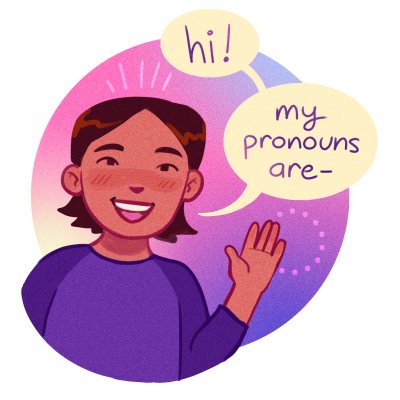
What are pronouns?
When referring to people specifically, pronounds are the words that replace a person's name to avoid repeating their name over and over again in a sentence or phrase.
For example: "Johnny sets Johnny's drink bottle down on the bench beside Johnny so Johnny doesn't have to keep holding it" is incredibly cumbersome as a sentence.
Pronouns can help out: "Johnny sets his drink bottle down on the bench beside him so he doesn't have to keep holding it".
What are gender pronouns?
Historically, as a language, English has always operated on a binary system of personal pronouns with regard to individuals. There have been the masculine pronouns (he, him, his) and feminine pronouns (she, her, hers) indicatiung the binary gender of the person to whom we are referring. These are gender pronouns.
However, we can't always know or assume a person's gender identity just by looking at them. To assume someone's gender or pronounds can be disrespectful and hurtful.
It is encouraged and acceptable to use the pronouns they, them, and their (also known as the they-series) to refer to single individuals when we do not know their gender or when their gender is non-binary. (Note: we use 'non-binary' as an umbrella term while acknowledging that people may identify in other ways including 'agender', 'genderqueer', 'gender fluid', and others).
By using the they-series of pronouns when we are unsure, we promote inclusivity because we are avoiding making any assumptions about a person's gender.
FUN FACT: "they" as a singular, non-binary pronound was named "Word of the Year" in 2015!
How can I be inclusive with gender pronounds in with my staff and volunteers?
The first and best way to inclusive with gender pronounds is to model their use proactively and inclusively to cultivate a safe place in your organisation, your office, and in your interactions with staff, volunteers, customers and clients.
What happens if I accidentally use the wrong pronoun or make a mistake?
It's okay! It happens. We all make mistakes.
The best thing to do is politely and quickly apologise, use their pronoun, and move on. Try, "I'm sorry, I meant to say she" or "apologies, she".
Making too big a deal with huge apologies or spending too much time focused on the error can end up making everyone feel uncomfortable and awkward.